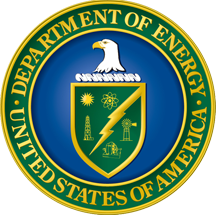Enhanced thermal conductivity and expedited freezing of nanoparticle suspensions utilized as novel phase change materials
Dissertation/Thesis
Year Completed: 2011
List of Authors:
Liwu Fan
Abstract
In this dissertation, enhanced thermal conductivity and expedited freezing of nanoparticle suspensions used as novel phase change materials (PCM), referred to as nano-enhanced PCM (NePCM), were investigated using analytic, experimental and numerical methods.
Two hydrocarbons, cyclohexane (C6H12) and eicosane (C20H42), were selected as the base PCM. Copper oxide (CuO) nanoparticles, stabilized by sodium oleate acid (SOA), were used as the nano-structured thermal conductivity enhancers. Thermal conductivity measurements using the transient plane source (TPS) technique were performed for the NePCM samples in both liquid and solid phases. The dependence of thermal conductivity on both temperature and the loading of CuO nanoparticles was investigated. In the liquid phase, thermal conductivity enhancement was clearly observed with increasing loading of nanoparticles, and was found to be in good agreement with the predicted values of the Maxwell’s equation. The measured thermal conductivity enhancement in the solid phase, however, exhibited a non-monotonic enhancement phenomenon for both cyclohexane- and eicosane-based samples for mass fraction of nanoparticles greater than 2 percent.
Mathematical modeling of unidirectional freezing of NePCM was conducted through a one-dimensional, two-region Stefan problem, in which the NePCM was treated as a “single-phase†PCM with modified effective thermophysical properties in the presence of nanoparticles. The problem was solved by employing both a combined analytic/integral approach and the extended lattice Boltzmann method (LBM) with enthalpy formulation. The analytic solution was then applied to two representative cases of aqueous and cyclohexane-based NePCM with various metal and metal oxide nanoparticles. It was clearly shown that freezing is expedited as the loading of nanoparticles is increased. For example, expediting of freezing of water was observed to be up to 11.4 percent by introducing nanoparticles at a volume fraction of 10 percent.
In an effort to validate the expedited unidirectional freezing observed through mathematical modeling, a cooled-from-bottom freezing experimental setup was designed and constructed. The cooling boundary was first realized by utilizing a thermoelectric cooler (TEC). Due to the lack of boundary temperature control, the experimental results on freezing of cyclohexane-based NePCM samples exhibited great discrepancies with the numerical predictions based on the Stefan model. The experimental setup was then refined by replacing the TEC with a copper cold plate (CCP). With the aid of a controllable constant-temperature bath, a stable cold boundary condition was achieved. It was observed that the experimental results from the improved setup were in good agreement with the numerical predictions. The greatest expediting (5.2 percent) of freezing of cyclohexane was realized experimentally by introducing CuO nanoparticles with a mass fraction of 2 percent.
Having shown the enhanced thermal conductivity and expedited unidirectional freezing of hydrocarbon-based NePCM samples, the great potential of such novel materials with applications to improved thermal energy storage and waste heat recovery was justified. Further effort of NePCM research will be devoted to improving the colloidal stability, measuring the thermophysical properties for various colloids, and investigating melting heat transfer that will involve natural convection. Mathematical modeling and experimental investigation of microscale dynamics of nanoparticles in suspensions undergoing phase change are also challenging.
